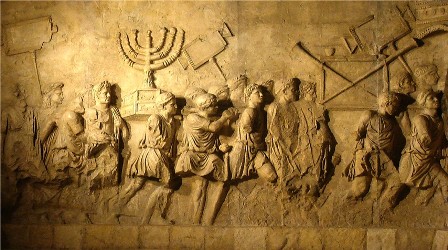
The term “Diaspora” became almost a technical term in the first century to identify those Jews who were “scattered” all around the Middle East and the Mediterranean. The term was quickly applied to Christian Jews and perhaps Christians more generally, by some early New Testament writers. For example, James addresses his letter to the “twelve tribes who are scattered abroad [diaspora]” (1:1). Luke refers to those “scattered” [diaspora] by the persecution that arose after the death of Stephen (Acts 8:1, 4; 11:19). Nevertheless, the term is used especially of Diaspora Judaism – those Jews who lived amongst the gentiles, outside their ancestral homeland. This phenomenon started in the centuries before Christ as a result of conquest: foreign powers took many prisoners into captivity. But many of these refused to assimilate to the culture of their new masters. Rather they clung tenaciously to their Jewish identity even in the midst of foreign and hostile environments.
P. R. Trebilco’s article on Diaspora Judaism (Dictionary of the Later New Testament and its Developments, 287-300) distinguishes between the assimilation, acculturation and accommodation of Diaspora communities. Assimilation refers to the degree of social contact and interaction Jews had with their new gentile neighbours. Acculturation refers to the degree to which they adopted gentile culture and practices, including language and education, ideology and worldview. Accommodation refers to the use they made of Hellenistic culture.
Trebilco argues that most Jews had “medium” levels of assimilation; that is, they had significant social ties with their non-Jewish environment, but still retained their Jewish identity, and remained faithful to their Jewish traditions. Some Jews, usually those seeking social acceptance or upward mobility, assimilated so completely into their new environment that they lost or even forsook their Jewish heritage. At the other end of the scale, some Jews remained aloof from their new environment, keeping their own company and carefully preserving their own traditions. Most Jews, however, “were neither socially and culturally isolated nor simply blended into some social amalgam. While their boundaries may have been defined variously in differing circumstances, it was precisely the ability to maintain these boundaries while continuing everyday social contacts with non-Jews that was the peculiar achievement of the successful Diaspora communities” (295).
According to Trebilco, the core of Diaspora identity was ethnicity: the combination of Jewish ancestry and custom that could be voluntarily adopted or abandoned (297). He identifies a variety of commitments which supported and sustained this identity: (a) modes of marriage and parenting, kinship and re-socialisation for outsiders joining the community; (b) the centrality of the local Jewish community in the life of individual Jews, and the links of particular Diaspora communities with other communities; (c) the Torah as key text for nurturing identity and life; and (d) beliefs and practices which reinforced identity, distinguished Jews from their surrounding culture, and facilitated continuing identity formation in the community. These included such things as a commitment to monotheism, adherence to the dietary rules of Torah, which also facilitated common meals, the practices of circumcision and Sabbath. These practices were key boundary markers with great social significance, which set the Diaspora communities apart from their neighbours, though without leading the communities into isolationist modes of life.
I read Trebilco’s article in the context of other work, but it got me thinking about the present state and context of the church. The question is: might patterns of life in Diaspora Judaism serve as an analogy for being the church in a post-Christian environment, in which the church is a minority community in a disinterested, sometimes hostile environment? Or put differently, how might the church retain and sustain its distinctive identity and ethos in this environment, and communicate it across generations?
I will post some further reflections on this tomorrow.